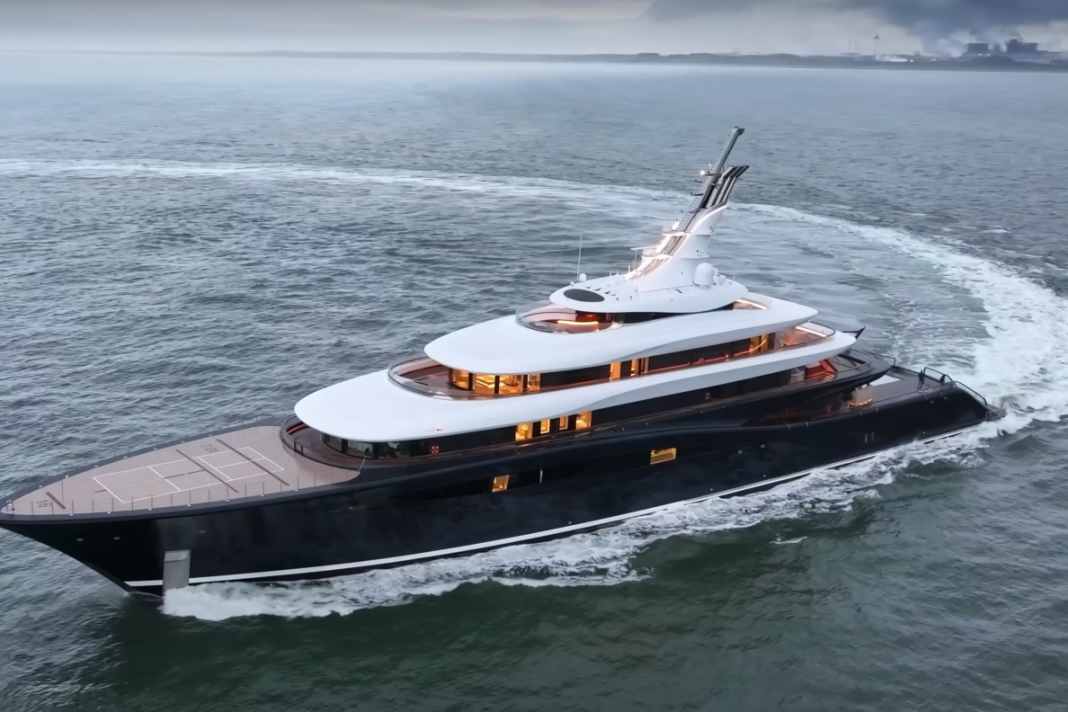



Project 821 was pulled out of the hall last year, and now the Feadship is setting sail as a "Breakthrough". The captain on board the 118.8 metre yacht reported at the beginning of 2025: the crew will be completed in February and March, the yacht will be loaded and then it's all about training, training, training. This is necessary because the Giga comes with an industry first.
Zero emissions. If everything runs as it should, only clean water will come out of the Feadship's exhaust pipes over short distances or for hotel operations - ideal for harbour manoeuvres or in protected marine areas.
The hydrogen on board is stored at minus 253 degrees
Below deck of the Feadship are liquid hydrogen tanks with a capacity of 92 cubic metres, plus an evaporation system: the hydrogen, cooled to minus 253 degrees Celsius, evaporates, is heated and then the gas flows into the fuel cell. Details on the technology below deck of Project 821.
MAN Cryo is the name behind the new system for superyachting. The company is based in Gothenburg, Sweden, and leads the market for cryogenic systems for the storage, distribution and handling of gases. Although hydrogen fuel cells have been used commercially for more than 60 years, until now there has been no solution for the maritime sector.
MAN Cryo supplies the gas system for the Feadship
Feadship's Project 821 now marks the turning point: with the new propulsion technology, "Breakthrough" can lie silently at anchor for a week while comfortably catering for its guests - or cruise at ten knots with zero emissions.
One of the biggest challenges was the approval process for the tank design, for which there were no regulations. Normally, Type C LNG tanks are designed to the IGF Code, which is not entirely applicable to hydrogen. Instead, MAN Cryo submitted a safe design to Lloyd's Register based on a risk assessment, which is approved for below deck installation.
